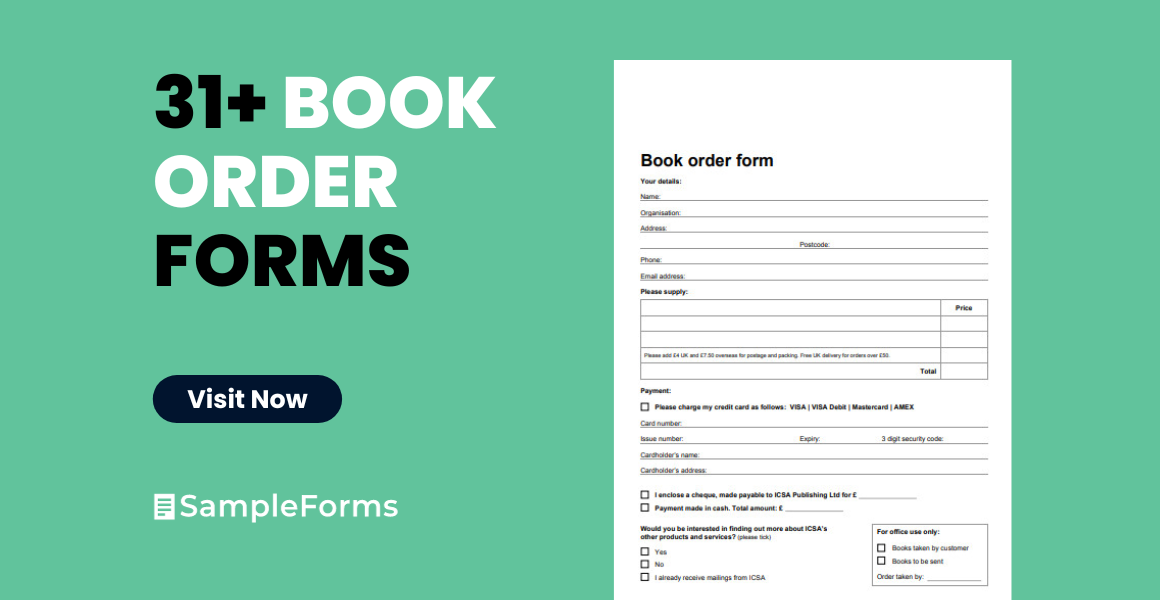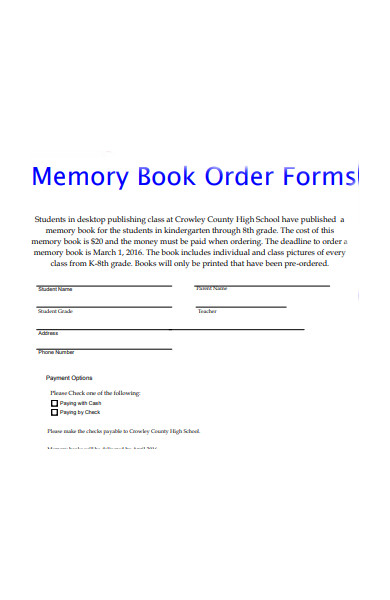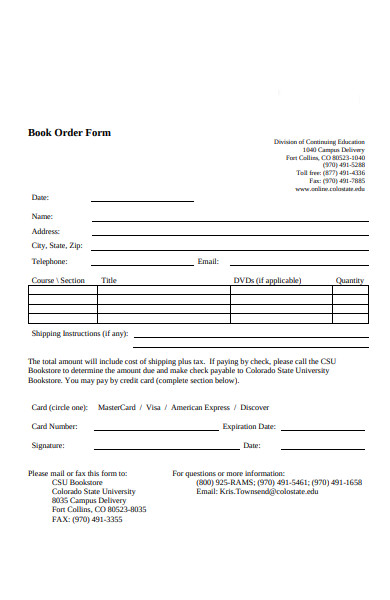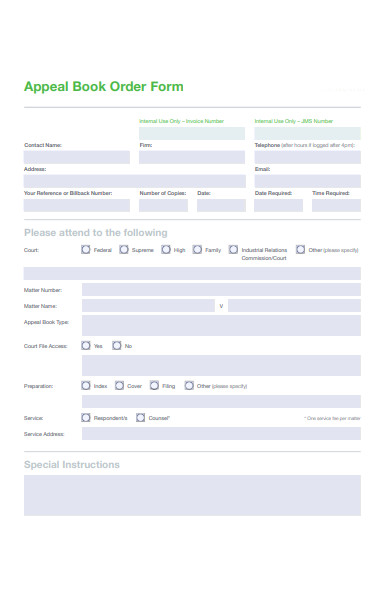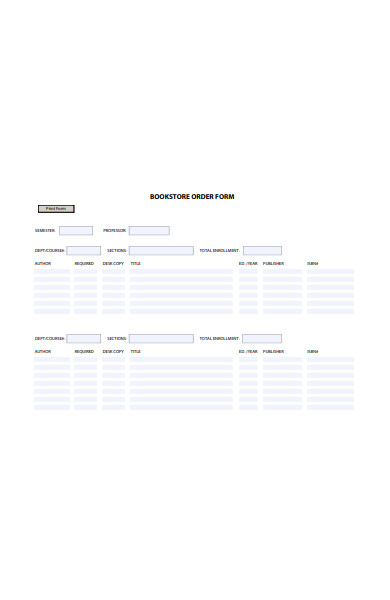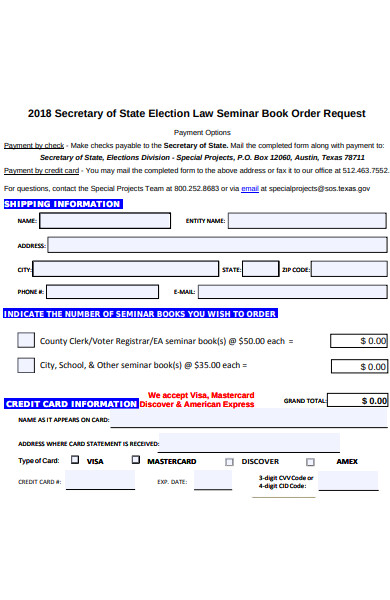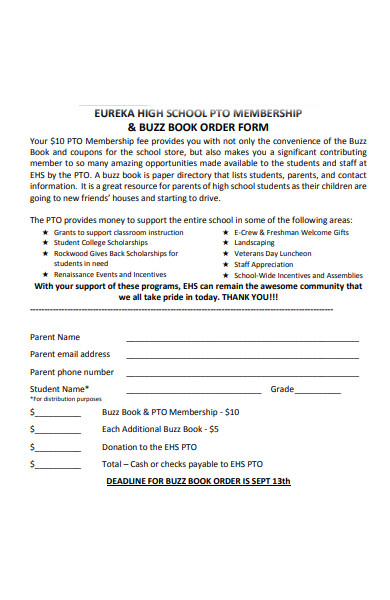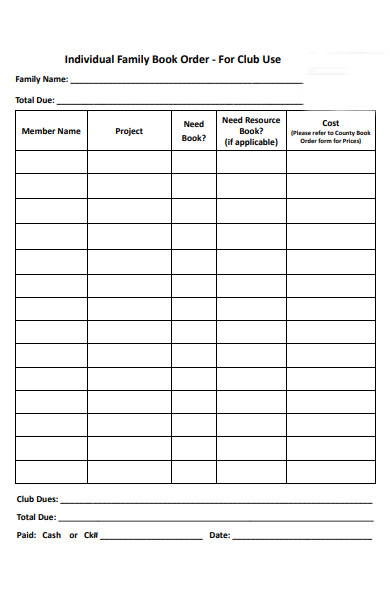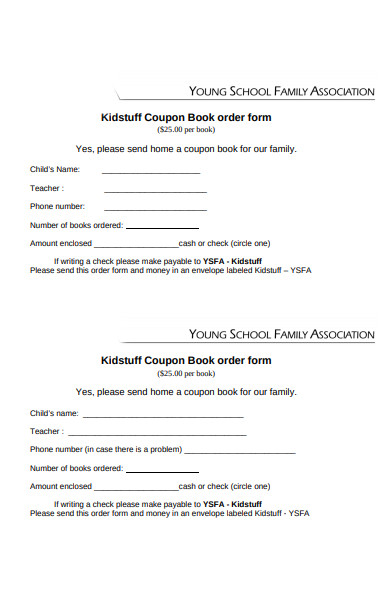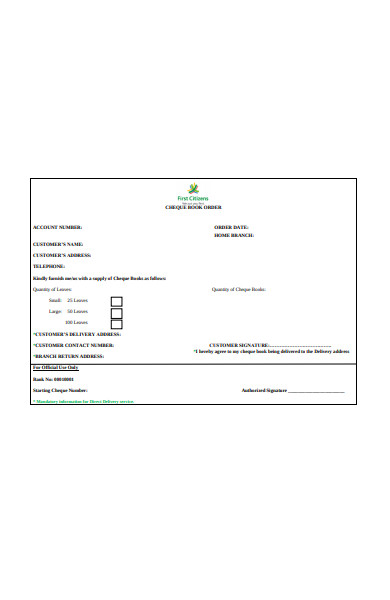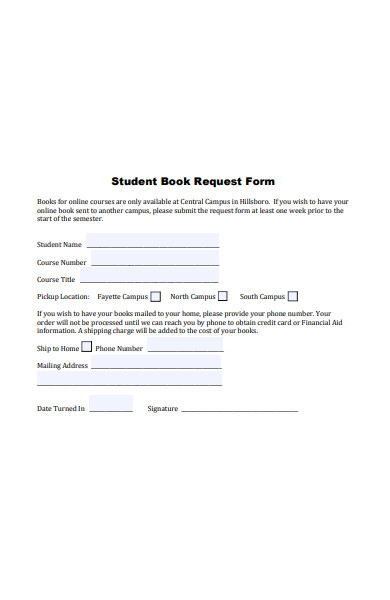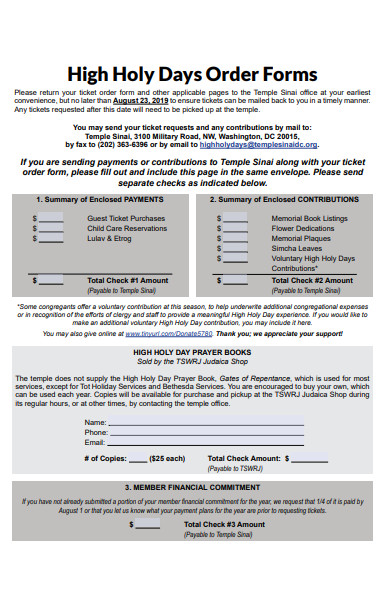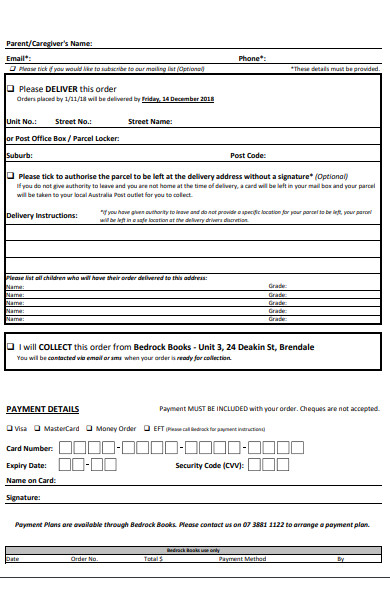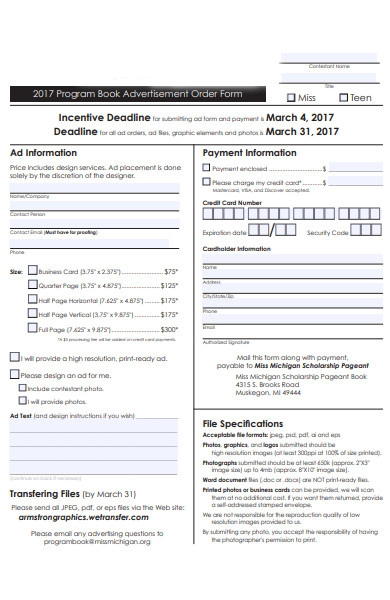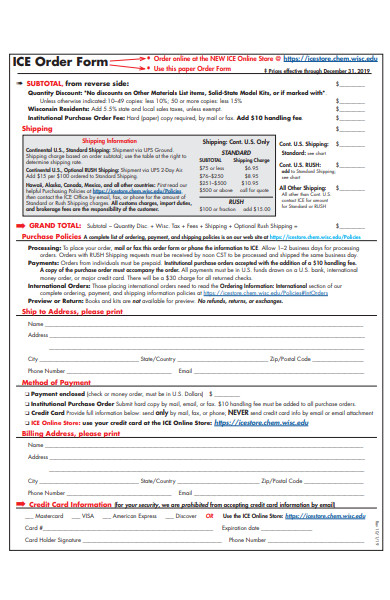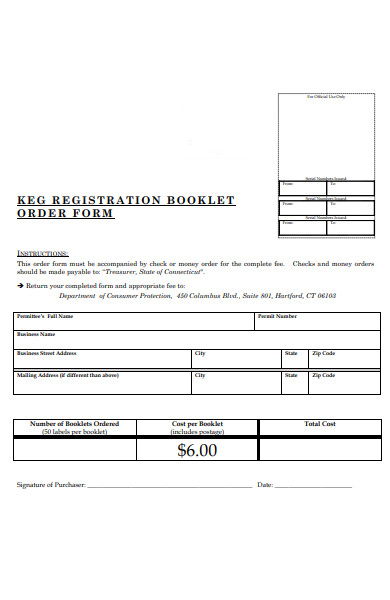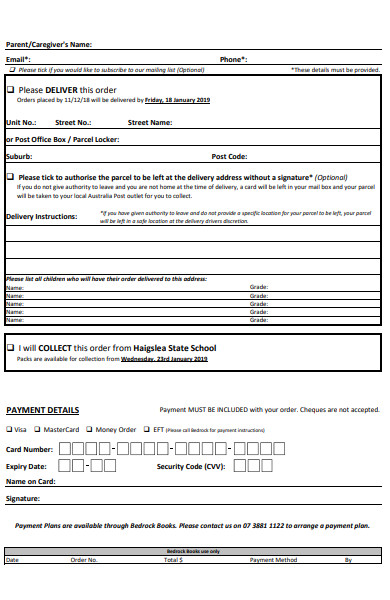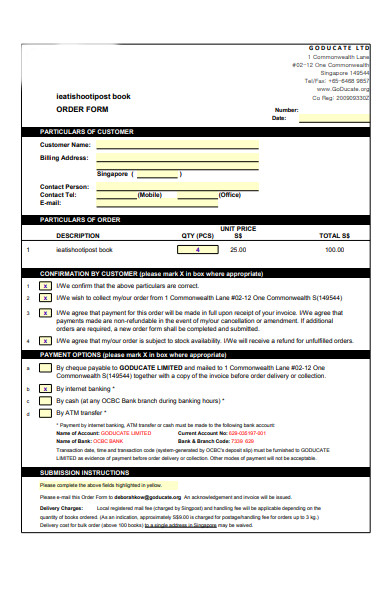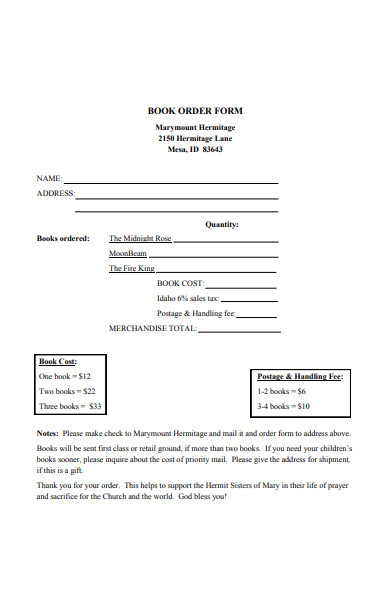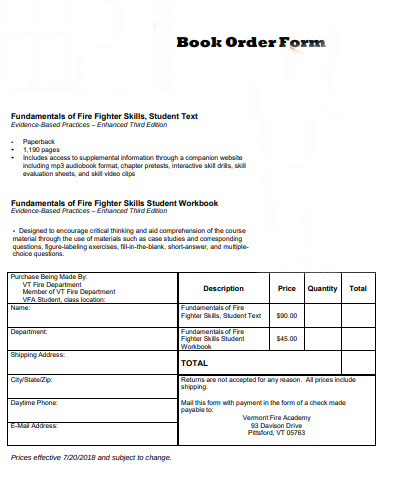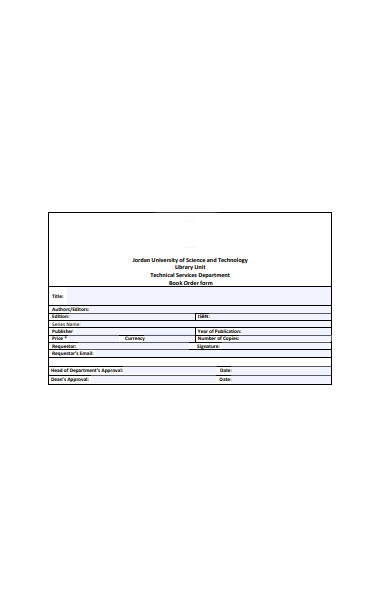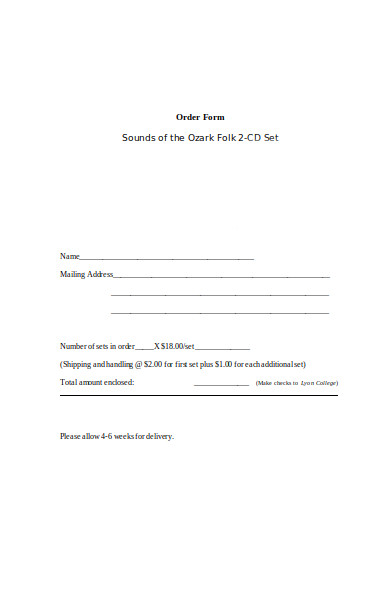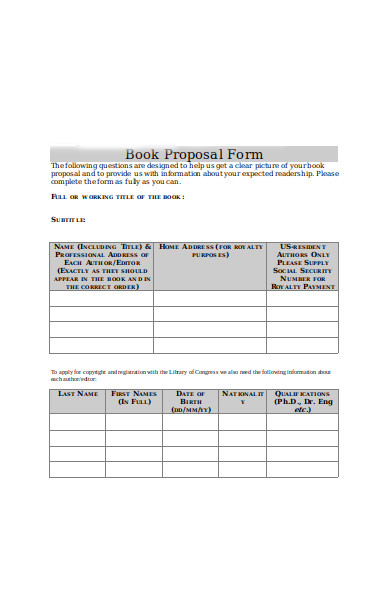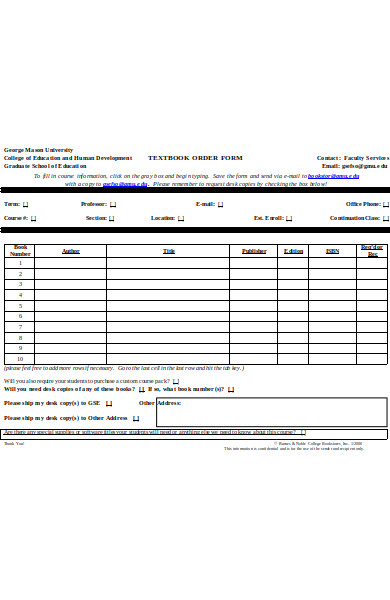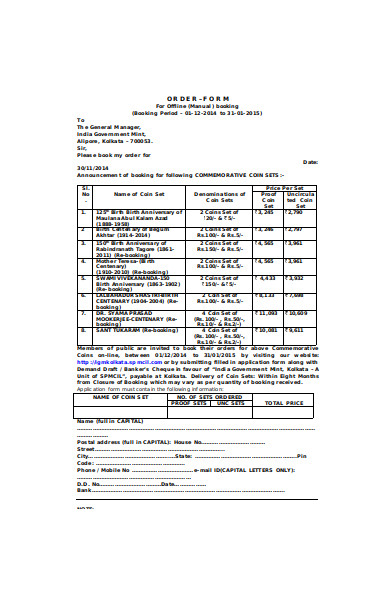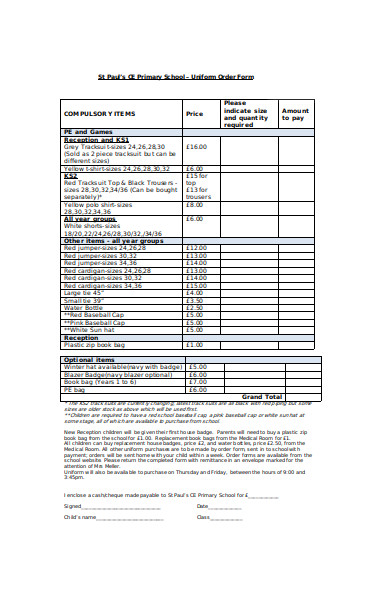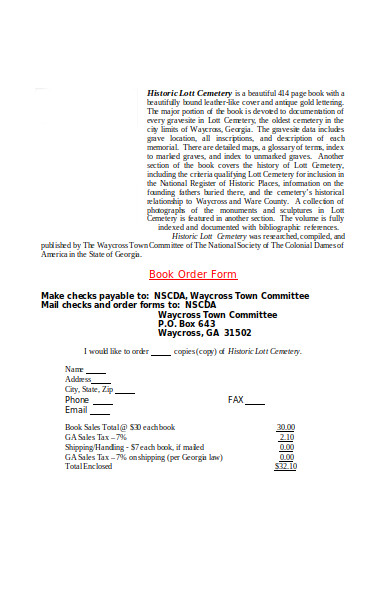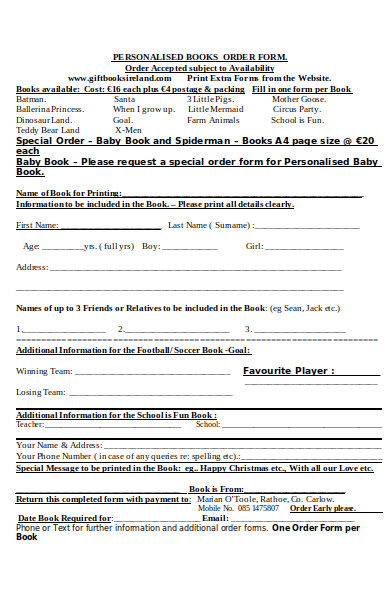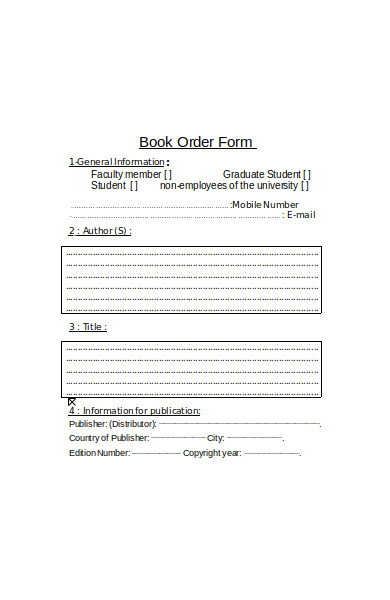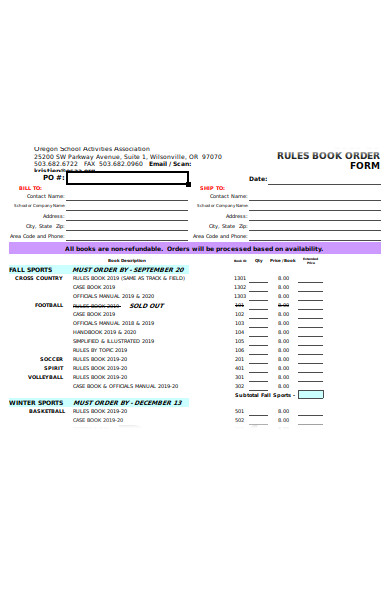Rulers of ancient times used writing to secure codes of law, document genealogies, and other matters that were socially crucial. Later on, the written word came to define one important development in mankind’s history—the spread of schools and literacy. After that, the invention of printing opened massive possibilities for writers—they made money (and history) out of selling books.
FREE 31+ Book Order Forms in PDF | MS Word | Excel
1. Book Club Order Form
2. Memory Book Order Form
3. Book Order Form Sample
4. Appeal Book Order Form
5. Book Store Order Form
6. Book Order Request Form
7. Book Order Membership Form
8. Individual Book Order Form
9. Coupon Book Order Form
10. Cheque Book Order Form
11. Student Book Order Form
12. Holy Day Book Order Form
13. Ritual Book Order Form
14. Book List Order Form
15. Book Advertisement Order Form
16. Simple Book Order Form
17. Registration Booklet Order Form
18. General Book Order Form
19. Graduate Book Order Form
20. Book Fair Order Form
21. Book Purchase Order Form
22. Basic Book Order Form
23. Book Pre Order Form
24. Book Proposal Order Form
25. Sponsorship Book Order Form
26. Text Book Order Form
27. Booking Period Order Form
28. Uniform Book Order Form
29. School Book Order Form
30. Personalised Book Order Form
31. Employee Book Order Form
32. Book Rules Order Form
Why Do You Need a Book Order Form?
Printing was at the core of Renaissance Europe’s intellectual revolution 500 years ago. In 1498, Barcelona printed 18000 letters of indulgence. Around this time, there was a modest market for books, but printing went beyond the clergy’s religious correspondence towards the rising need of the middle class for information and knowledge. And the rest, as the scholars say, is history.
Today, books constitute much of the none-periodicals in print, as various reports and figures continue to show us that people still read, and they always prefer purchasing actual books than electronic or pdf ones. The Association of American Publishers reports a 4.6% increase in the billion-dollar trade book market, ending 2018 with a $7.83 billion revenue. If you’re in the book business and wants to cater to the traditional bookworm, then make their purchasing experience better by securing book order forms.
Book Order Forms: Tradition and the Modern Bookworm
From large corporations who profits from selling goods and services to small business enterprises, entrepreneurs credit much of their streamlined operations and smoother transactions with clients to the use of order forms. Whether you own a bookstore affiliated with big publishing houses or a neighborhood’s go-to secondhand book place, you’ll be able to provide better service to your purchasing readers and book collectors by handing them physical or electronic book order forms. Here’s why:
- Bookstores need different types of forms: Booksellers have to secure various kinds of forms, including service forms and work orders for contractors they work with, as well as the usual order forms for accepting book orders from customers, especially the ones hailing from distant cities and towns. Forms are especially helpful when a buyer wants a book in a special edition that you may have to acquire from suppliers in another country. These forms may also include shipping invoice forms where you can use a checkout form template
- Order forms combine advanced features: You may think that you’re not doing anything different from the book shop owner across the street, but that’s where you’re wrong. Bookstore or not, every business is unique, even when they offer the same products or services. The difference lies in the type of books or the selection you provide your reading or book-collecting audience, and you can list these down in detail by customizing the form you hand out to your customers. This way, it becomes easier for both clients and store staff to fill in the details, such as a personal date or information request, before processing and finalizing payment.
- Better transactions with authorities become easier: These days, various organizations, primarily government entities, require order forms and sheets in negotiating deals with private organizations. You’ll find your forms very useful when the time comes that the local archives office or library run out of helpful reference or titles that they want to add for the reading public. These documents are handy if the orders come in bulk. You don’t want to disappoint your neighborhood. So getting your forms sorted will be a great idea.
- It saves time: Let’s face it. Even if you have an electronic record of inventory, the mounting book orders from library customers, and the sales you’ve made over the past weeks, securing your form, or better yet—customizing it—will help you, your staff, and suppliers process book orders faster since these documents are easy to fill in. No more scratching your head over taking down orders and the amount due when you can check one paperwork for the whole transaction.
Why Should We Care About Books?
Cicero once said, “If you have a garden and a library, you have everything you need.” Books are your gateway to the intellect. In every literate society, across civilizations, books have defied space and time to carry knowledge in literature, enrich, and preserve it. Even with the lack of traceable records and text over the existence of the earliest books, libraries around the world, and in the homes we’ve been to, will always carry the stories and messages of history. They will always have the stories of great men and women, and places, universes, and creatures real and otherwise.
What kind of reader are you? What kind of readers do you wish to serve as a bookseller?
Hardback and paperback books still account for the most significant share of the book market’s billion-dollar revenue, amassing $5.71 billion in 2018, which accounts for 73 percent of the United States’ trade book revenue. It is therefore evident, that although the thinking world has gone digital in no small extent, it still wants to read books in print. This means the book industry as a whole isn’t about to go down or get shunned by more comfortable, “junk food” entertainment, anytime soon.
For as long as authors write and share with the thinking masses, we will not see a shortage of books. Books will be threatened. Books will be left to get dusty on the shelves. But they will never be irrelevant.
A Book Collector’s Tale
There are book collectors. And then there’s Sir Thomas Phillips, known to be the most magnificent manuscript or most prolific book collector the world has ever seen. With only the British Museum as competition, Phillips, baronet, and inheritor of a large sum of money, bought the most complex titles at auctions and the most sophisticated book shops in all of England. At a pace worthy of a king, during the 19th century, he acquired some 40,000 printed books and over 60, 000 manuscripts. This collection was arguably the largest in the history of book purchasing and collecting. His manuscripts were also said to be the rarest copies in the world. The Phillips collection was like no other, preserving and enriching some of the world’s most exclusive titles. However, you can also expect them to come at an equally mind-blowing price.
Bookstore or Bookshop?
The commercial trading or business of distributing books for sale (used or otherwise) is known as bookselling. The retailing of books in the post-press process traces its origins to the founding of libraries in 300 BC, fueling the Athenian booksellers to profit from the mass distribution of the written text. Today, bookstores (referred to as “bookshops” in Europe, especially in the UK) may either be a business that is part of a chain or a local, independent store that sells books. These stores and shops can vary in size, offering books in hundreds or hundreds of thousands of titles and volumes. Larger, more prominent and established bookstores can sell up to 500,000 titles in different genres, editions, and translations.
How Do You Order Books?
The modern ways to which books were sold and the process involved started soon after publishing, and mass printing was developed. The first people who printed books were also sellers and editors themselves. Eventually, it became necessary to distinguish booksellers whose business primarily consisted of selling books, both wholesale and retail, from publishers who dealt with the pre-press process, production, and distribution of books for acquisition or regular purchase orders.
In the nineteenth century up to the present, this distinction became crucial, since the whole process of getting books to the audience involved a lengthy means from the author’s manuscripts to the editing, promotion, selling, and distribution. As someone who purchases or is in charge of book acquisitions, here are some steps and tips you might find useful when processing book orders from a trusted seller:
Step 1: Choose a Bookstore or Retailer
From the most popular book distributors and online retailers, you’ll never run out of options to get your next reading list from. Amazon is one example of an online shop selling books in thousands of titles from your favorite publishers. If you are a collector or someone who wants to get a special edition, especially the ones that are out of print, then your best chance is the local secondhand bookshop. Want the Penguin Classics edition of George Orwell’s 1984? You can get them at any bookstore, provided they don’t run out of stocks fast. Looking to get the latest edition of Little Women? You might have to wait for a few days since, with its new adaptation, some people are bound to reread and purchase one extra copy again.
Some titles are rare, and some editions are popular among buyers, so you might want to give your seller a call and reserve the books you want.
Step 2: Determine the Copy You Want
Some readers are picky, while some want an addition to their growing collection. However, reading copies are what people usually purchase, sometimes in bulk or by sets. Since these copies are the standard, they are also the most common purchases of buyers. If you just want to curl up and enjoy reading a book, then a reading copy is the one for you. On the other hand, if you’re looking for a special edition of your favorite books, then you must specify that in your order form. Collecting these types of books can be challenging because you often have to search harder, online, and on the streets.
Step 3: Make Sure to Read the Description
Reading the description of the book is very important, especially if you’re buying from a secondhand bookshop. Don’t finalize the purchase without checking the description, because if you’re also purchasing online, you might find the quality not worth the asking price. You also have to be wary of sellers that offer books at suspiciously low prices. These people sometimes lie about the quality of the edition or title they’re selling. Therefore, it’s best to make your purchase at a physical bookstore if you’re going for used, individual copies. If you want to purchase online, check customer reviews to make sure you’re placing safe bets on your purchase.
Step 4: Ask For, and Fill Out an Order Form
The final and most crucial step in your book purchasing is asking for and filling out an order form. As you may have noticed, this article includes a great selection of book order forms that you can share with your seller. If you’re the seller, then it’s a good idea to choose from the sample order forms we have to make sure your reader of a customer will end up happy, not just with the purchase, but with the experience as well. Order forms help streamline your transactions, and it helps make sure your customers are saved from the hassle of complicated ordering experience. Specifically, with book order forms, you get to offer added customer and reader satisfaction.
Some people find joy in reading as much as they find comfort in buying and collecting books. A bookworm will argue that one can never have too many books, no matter how much one runs out of shelves to put them in. From local secondhand bookshops to your regular publishing houses’ distributors, buying your favorite books (sometimes, in different editions to boot) is a different kind of luxury altogether.
Related Posts
-
Food Order Form
-
Sales Order Form
-
Order Form
-
Fundraiser Order Form
-
FREE 5+ Product and Inventory Order Forms in PDF | MS Word
-
FREE 9+ Photography Order Forms in PDF | MS Word
-
FREE 6+ Jewelry Order Forms in PDF | MS Word | Excel
-
FREE 16+ Ticket Order Forms in PDF | MS Word | Excel
-
FREE 9+ Package Order Forms in PDF | MS Word
-
FREE 9+ Card Order Forms in MS Word | PDF | Excel
-
FREE 10+ Consent Order Forms in PDF | MS Word
-
Advantages of Using Clothing Order Forms [ With Samples ]
-
FREE 11+ Change Order Forms in PDF | Excel | MS Word
-
FREE 11+ Sample Medical Order Forms in PDF | Excel
-
FREE 9+ Sample Debit Order Forms in PDF | Ms Word
